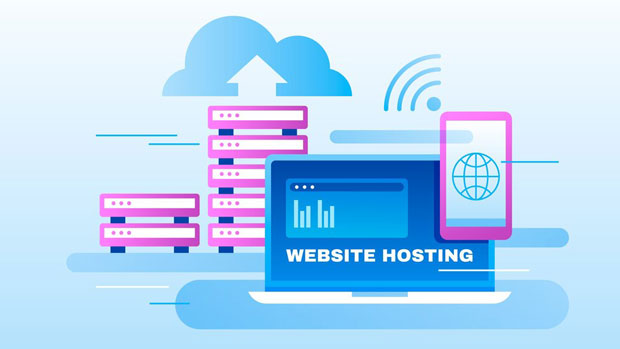In the world of proxy services, businesses are often faced with the decision of choosing between static and dynamic proxies. These two types of proxies serve different purposes and come with their own sets of advantages and limitations. Furthermore, selecting the right Proxy Provider can significantly impact the overall performance, cost-effectiveness, and efficiency of the proxy service. This article aims to provide a clear comparison between static proxies and dynamic proxies, analyze their respective benefits and drawbacks, and evaluate the cost-performance ratio of different Proxy Providers. By the end, you will have a comprehensive understanding of which proxy type and provider align best with your business requirements. 1. Understanding Static and Dynamic ProxiesBefore delving into the cost-effectiveness of different Proxy Providers, it is essential to understand what static and dynamic proxies are and how they differ.1.1 Static ProxyA static proxy is a type of proxy service where the IP address assigned to the user remains consistent over time. Static proxies are generally associated with a fixed set of IP addresses, which means users are assigned the same IP every time they use the service. These proxies are ideal for users who require consistency and need to maintain a persistent online presence. Businesses that use static proxies benefit from a higher level of anonymity, reduced risk of IP blacklisting, and easier management for various use cases such as web scraping, SEO, and accessing geo-restricted content.1.2 Dynamic ProxyDynamic proxies, on the other hand, provide users with a pool of rotating IP addresses. Unlike static proxies, the IP address assigned to the user changes at regular intervals, which enhances anonymity and makes it harder for websites to detect bot-like activity. Dynamic proxies are commonly used for tasks that involve frequent IP switching, such as web scraping or conducting market research. The key advantage of dynamic proxies lies in their ability to rotate IPs automatically, ensuring that users can bypass restrictions, avoid CAPTCHAs, and prevent detection while still achieving their desired goals.2. Benefits and Drawbacks of Static and Dynamic ProxiesEach type of proxy comes with its unique set of advantages and limitations, making it crucial to assess both options when considering a Proxy Provider.2.1 Advantages of Static Proxies- Consistency: The most significant benefit of static proxies is their consistent IP address assignment, which is particularly important for long-term activities such as managing social media accounts, conducting market research, or accessing region-specific content without being flagged by the target website.- Reduced Risk of Detection: With a fixed IP address, static proxies reduce the chances of being flagged or blacklisted by websites. This is because the IP address used is not changing frequently, making it appear more legitimate to the target server.- Better for SEO: Static proxies are well-suited for search engine optimization tasks, as they allow businesses to maintain a consistent IP when submitting requests or scraping data, ensuring better ranking and reliability in SERP (Search Engine Results Page) queries.2.2 Drawbacks of Static Proxies- Higher Risk of Blocking: Since static proxies use a fixed IP, they are more vulnerable to being detected by websites that monitor IP behavior. Once a website detects a repeated pattern from a single IP address, it can block that IP, making the proxy less effective.- Limited Flexibility: Static proxies are not ideal for activities that require frequent IP switching, such as large-scale data scraping or managing multiple accounts across different platforms. This lack of flexibility can hinder performance for more advanced use cases.2.3 Advantages of Dynamic Proxies- Anonymity and Security: With dynamic proxies, the IP address is constantly rotating, providing users with a higher level of anonymity and security. This makes it harder for websites to track the user's actions or identify patterns that could lead to blocking.- Efficient Web Scraping: Dynamic proxies are ideal for web scraping tasks where numerous requests need to be made in a short time. The ability to rotate IP addresses means that users can avoid detection, IP bans, or CAPTCHA challenges.- Better for Large-Scale Operations: Dynamic proxies excel in situations where users need to perform tasks that involve large-scale operations, such as social media automation, market research, or competitive intelligence.2.4 Drawbacks of Dynamic Proxies- Complexity: Dynamic proxies can be more complex to manage due to the rotation of IP addresses. This can cause issues when trying to maintain session consistency or when interacting with certain websites that require stable sessions.- Higher Cost: In some cases, dynamic proxies may come with a higher cost due to their advanced capabilities, especially when compared to static proxies.3. Evaluating the Cost-Effectiveness of Proxy ProvidersNow that we have a clear understanding of static and dynamic proxies, it’s time to evaluate the cost-effectiveness of different Proxy Providers. The choice of a Proxy Provider is crucial as it directly impacts performance, reliability, and cost-efficiency. The key factors to consider when comparing Proxy Providers include:3.1 Service ReliabilityReliability is paramount when selecting a Proxy Provider. A reliable provider ensures minimal downtime, fast connection speeds, and responsive customer service. A proxy provider’s network of IP addresses should be stable and robust enough to handle large-scale operations and high-demand tasks, whether you are using static or dynamic proxies.3.2 Performance MetricsPerformance is a critical factor when comparing the cost-effectiveness of Proxy Providers. You need to assess the speed and latency of both static and dynamic proxies provided by the provider. While static proxies are typically faster for long-term tasks, dynamic proxies excel in scenarios that require frequent IP rotation and high-volume data scraping. Analyzing performance metrics like speed, IP rotation intervals, and success rates will help you determine the overall efficiency of the proxy service.3.3 Pricing ModelsThe cost structure of Proxy Providers can vary greatly. Some providers offer subscription-based pricing, while others charge based on usage or the number of IP addresses used. Static proxies may come at a lower cost due to their simplicity, while dynamic proxies often have higher pricing due to the complexity of rotating IP addresses. It's essential to assess your business’s specific needs and find the best pricing model that balances cost with performance.3.4 Customer Support and Additional FeaturesA Proxy Provider's customer support and additional features (e.g., IP whitelisting, session management, geo-targeting) are also key factors to consider. Good customer support can help you resolve any issues quickly, ensuring minimal disruptions to your business operations. Furthermore, additional features like browser fingerprinting protection, CAPTCHA bypassing, and geo-targeting can enhance the proxy experience and provide added value.4. Conclusion: Which Proxy Provider Offers the Best Cost-Effectiveness?When choosing between static and dynamic proxies, the decision ultimately depends on the specific use case and business requirements. Static proxies are best for tasks that require consistency and long-term performance, while dynamic proxies are better suited for large-scale operations and tasks that need frequent IP rotation.The cost-effectiveness of Proxy Providers varies based on factors like reliability, performance, pricing models, and customer support. To get the best value for money, it is important to carefully assess your needs and compare different providers. Ideally, the best Proxy Provider is one that offers the right balance between performance, flexibility, and price while providing excellent customer support to ensure the smooth operation of your business activities.By understanding the strengths and limitations of static and dynamic proxies, as well as evaluating the different Proxy Providers available, you can make a more informed decision and choose the provider that best meets your requirements in terms of both cost and performance.
Sep 19, 2025



































































